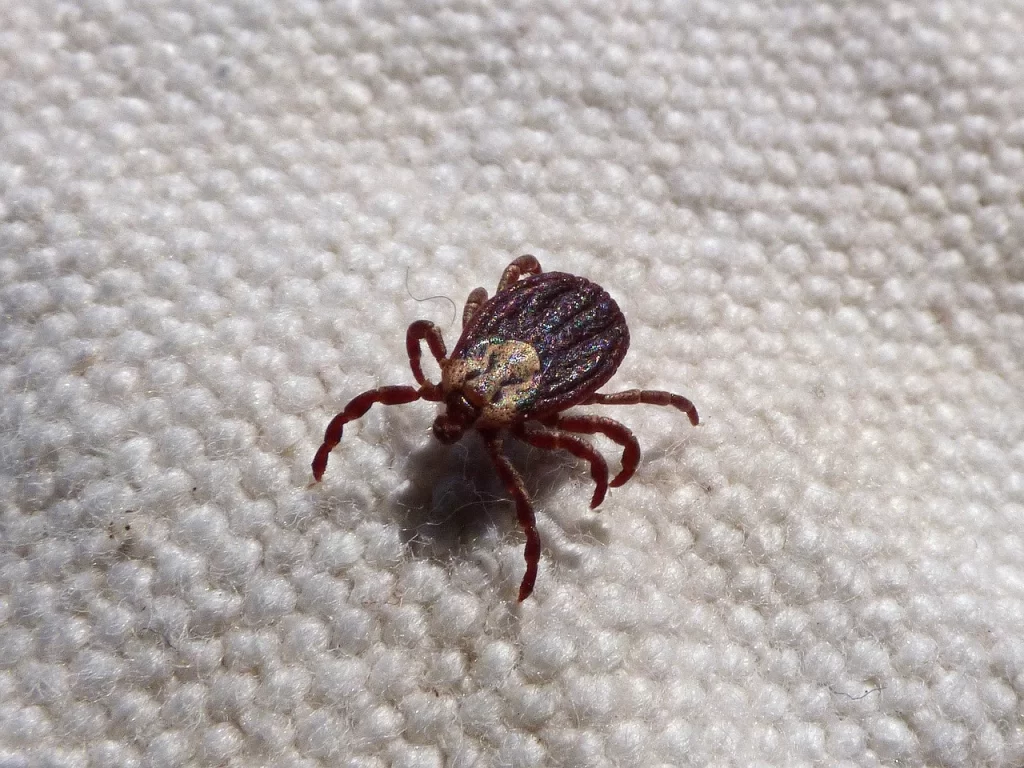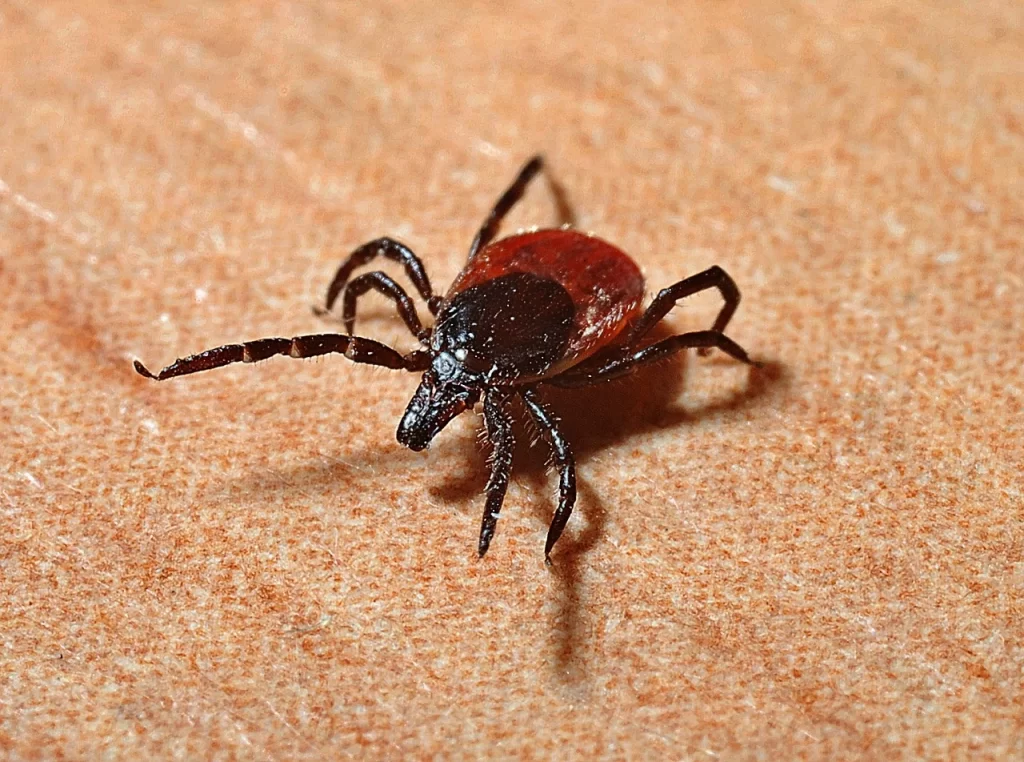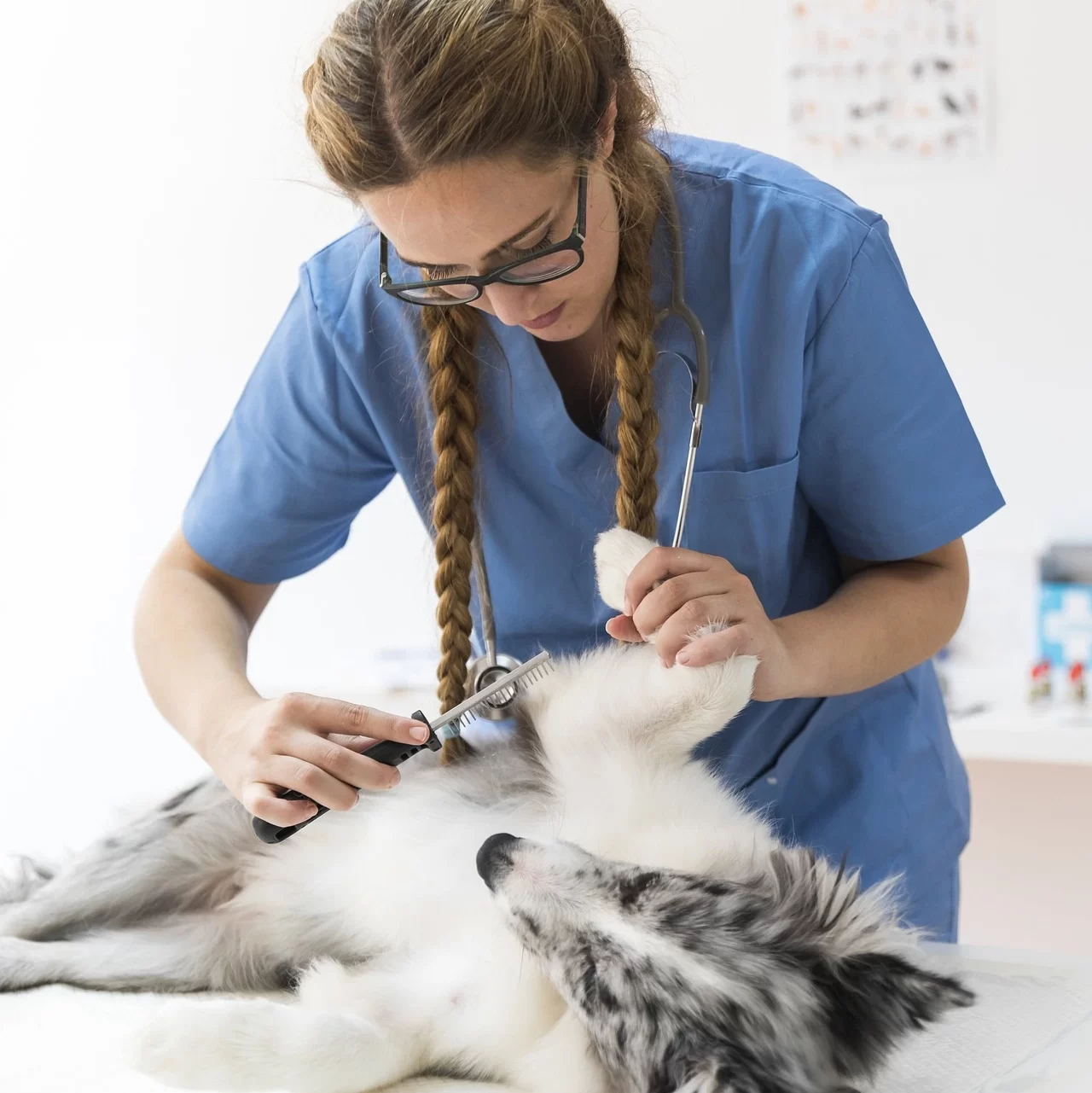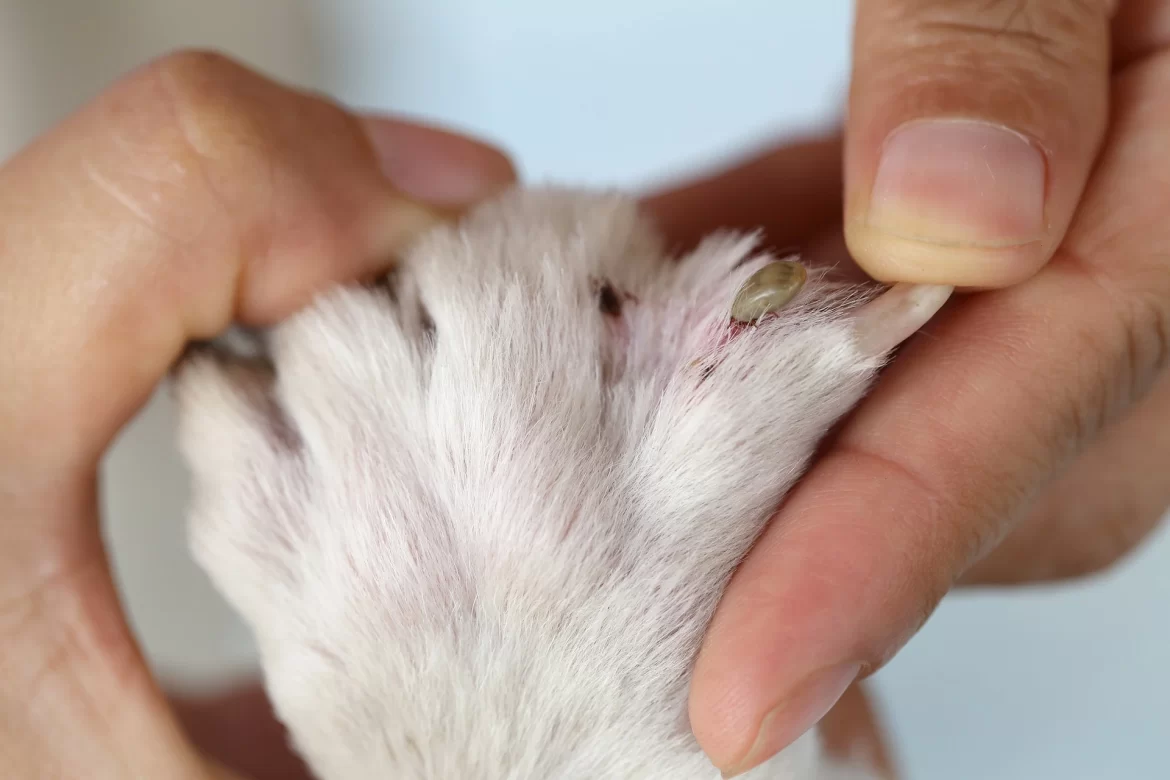Did you know that anaplasmosis in dogs is a silent-killer disease that often goes undiagnosed?
Anaplasma platys infection in dogs baffles even the most trained vets in the world, and not many vets are educated on how to effectively diagnose and treat the disease. While some dogs may appear normal despite being infected, the infection may be hard on other dogs, possibly causing organ failure and even death.
Does your dog have flu-like symptoms that mimic canine influenza? Is anaplasmosis in dogs contagious to humans? Can anaplasmosis in dogs be cured?
Let’s find out!
What causes anaplasmosis in dogs?
Canine anaplasmosis is a bacterial infection that spreads through a tick bite. This disease has two variants and each will affect a dog depending on the type of tick that bit it. The two variants include;
- Anaplasma platys
- Anaplasma phagocytophilum
What is anaplasma platys in dogs?

Anaplasma platys is a milder form of canine anaplasmosis. The brown dog tick causes this form of anaplasmosis. In medical circles, anaplasmosis platys are also referred to as
- Canine cyclic thrombocytopenia or
- Infectious canine cyclic thrombocytopenia
Anaplasma platys in dogs target platelets, which are important blood cells responsible for blood clotting. The bacteria invade and replicate within platelets, leading to their destruction and a subsequent decrease in the dog’s platelet count (hence the name thrombocytopenia). The decrease in platelets can result in bleeding disorders, leading to abnormal bleeding and bruising.
Symptoms of Anaplasma platys infection in dogs can include:
1. Cyclic thrombocytopenia: The platelet count in the dog’s blood fluctuates, leading to periods of low platelet counts and bleeding issues.
2. Fever: Dogs may develop a fever as their immune system responds to the infection.
3. Lethargy: Infected dogs may appear tired or weak.
4. Loss of appetite: A decrease in appetite is common.
5. Petechiae and bruising: Small red or purple spots (petechiae) may appear on the skin or mucous membranes, indicating bleeding.
6. Epistaxis: Nosebleeds can occur due to the decreased platelet count.
What is anaplasma phagocytophilum in dogs?

Anaplasma phagocytophilum is the most common version of anaplasmosis in dogs. The disease is a pandemic and is common in the West Coast and Northeast areas of America. The western black-legged tick carries the bacteria that causes Anaplasma phagocytophilum.
Once infected, the Anaplasma phagocytophilum bacteria target the white blood cells called granulocytes, specifically the neutrophils. The bacteria invade and replicate within these cells, leading to their destruction and a decrease in the dog’s white blood cell count, particularly neutrophils (neutropenia).
Symptoms of Anaplasma phagocytophilum infection in dogs can vary, but some common signs include:
1. Fever: Infected dogs may develop a fever as their immune system responds to the infection.
2. Lethargy: Dogs may appear tired, weak, or less active than usual.
3. Joint Pain: Lameness or joint stiffness can occur due to inflammation.
4. Loss of Appetite: A decrease in appetite is common in infected dogs.
5. Petechiae and Bruising: Small red or purple spots (petechiae) may appear on the skin or mucous membranes, indicating bleeding.
6. Nosebleeds: Epistaxis or nosebleeds can occur due to a decrease in platelet count (thrombocytopenia) caused by the infection.
Other species of the anaplasma bacteria are;
- Anaplasma bovis
- Anaplasma marginale
How serious is anaplasma in dogs?
The severity of anaplasmosis in dogs can vary depending on several factors, including the specific species of Anaplasma involved, the dog’s overall health and immune system strength, the duration of the infection, and the presence of any coexisting health conditions. In many cases, dogs with anaplasmosis may not show any clinical signs or may only exhibit mild symptoms, while others can develop more severe illnesses. Here’s an overview of the potential seriousness of anaplasmosis in dogs:
1. Asymptomatic or Mild Infection: Many dogs infected with Anaplasma can remain asymptomatic, meaning they show no visible signs of illness. Some dogs may experience mild symptoms such as a low-grade fever, lethargy, or slight joint discomfort that can resolve on its own without requiring specific treatment.
2. Acute Disease: In some cases, anaplasmosis can cause more pronounced clinical signs, including high fever, loss of appetite, joint pain, lameness, and general malaise. These symptoms are more likely to occur when the dog’s immune system is not adequately controlling the infection.
3. Chronic Disease: If the infection is not promptly diagnosed and treated or if the dog has an underlying health condition that compromises its immune system, anaplasmosis can become chronic. Chronic anaplasmosis may lead to recurrent or persistent symptoms, joint problems, and overall debilitation.
4. Coinfections: Dogs can sometimes be coinfected with multiple tick-borne pathogens, such as Lyme disease (caused by Borrelia burgdorferi) or Ehrlichiosis. Coinfections can complicate the clinical picture and make the illness more challenging to diagnose and manage.
5. Bleeding Disorders: Although rare, anaplasmosis can cause bleeding disorders due to a decrease in platelet count (thrombocytopenia), which can lead to abnormal bleeding or bruising.
Prompt diagnosis and appropriate treatment are essential for managing anaplasmosis effectively. Veterinarians typically use specific antibiotics to target the Anaplasma bacteria and alleviate the dog’s symptoms. Most dogs respond well to treatment and recover fully, especially if the infection is caught early. However, in severe cases or when there are complications, supportive care, and additional treatments may be necessary.
Prevention is also crucial in reducing the risk of anaplasmosis and other tick-borne diseases. Using tick preventatives, checking for ticks regularly, and avoiding tick-infested areas can significantly reduce a dog’s exposure to these bacteria-transmitting parasites. If you suspect your dog might have anaplasmosis or any other health concern, it’s best to seek prompt veterinary attention.
Zoonosis: Can my dog give me anaplasmosis?
Anaplasmosis in dogs is zoonotic, which means it is transmittable from infected dogs to humans. However, you will not get anaplasmosis directly from your furry friend, a tick carrying the infectious bacteria from the dog has to bite you as well to get infected.
Besides humans, anaplasmosis can affect other mammals too, and it is a prevalent bacterial infection in cattle too. Interacting with a dog infected with anaplasmosis won’t get you sick, getting bitten by a tick that carries the bacteria will.
What does anaplasma positive mean in dogs?
So how is anaplasmosis in dogs diagnosed?
There are several ways to diagnose Anaplasmosis in dogs. Trained vets with experience treating anaplasmosis will typically use a combination of clinical evaluation, laboratory tests, and sometimes imaging to confirm the infection. Here are the common diagnostic methods for anaplasmosis:
1. Clinical Signs and History: The veterinarian will start by obtaining a thorough medical history and conducting a physical examination of the dog. They will ask about any recent travel, exposure to ticks, or potential contact with other animals known to have tick-borne diseases.
2. Blood Tests: The most common blood test used to diagnose anaplasmosis is a complete blood count (CBC). The CBC helps assess the overall health of the dog, including the number and condition of blood cells. In anaplasmosis, certain changes in the blood cells may be observed, such as a decrease in platelet count (thrombocytopenia) and sometimes a decrease in white blood cell count (neutropenia).
3. Blood Smear: A blood smear is a microscopic examination of a stained blood sample. During this test, the veterinarian will look for the presence of Anaplasma organisms within the white blood cells, particularly neutrophils. The appearance of these organisms can be characteristic, helping to confirm the diagnosis.
4. Serology (Antibody Tests): Anaplasma-specific antibody tests can detect the presence of antibodies that the dog’s immune system produces in response to the infection. This type of test helps identify dogs that have been exposed to the Anaplasma bacteria, even if they are not currently showing clinical signs. However, it’s important to note that positive antibody tests do not necessarily indicate an active infection.
5. Molecular Tests (PCR): Polymerase chain reaction (PCR) tests are used to detect the genetic material (DNA) of Anaplasma in the dog’s blood. PCR tests are highly sensitive and specific, providing a definitive diagnosis of an active infection.
6. Imaging: In severe cases of anaplasmosis or if complications are suspected, imaging studies such as X-rays or ultrasound may be used to assess organ involvement and detect any abnormalities.
If a dog tests positive for anaplasmosis, it means they are infected with the bacteria although some dogs may not show any symptoms. It is not uncommon for a dog to get infected and heal without ever showing symptoms. Unfortunately for some dogs, the symptoms sh
Is anaplasmosis curable?

Yes, anaplasmosis in dogs is curable when properly diagnosed by an experienced vet. There are other high-level tests that a vet can conduct to affirm that a dog has been exposed and is infected by the anaplasma bacteria. This can be a combination of the following tests;
- Indirect fluorescent Antibody test (IFA)
- Enzyme-linked immunosorbent assay or Elisa
- Polymerase chain reaction (PCR)
What is used to treat anaplasmosis in dogs?
Anaplasmosis in dogs is typically treated with antibiotics. The most commonly prescribed antibiotic for anaplasmosis is doxycycline minocycline tetracycline. Doxycycline is effective against the Anaplasma bacteria and helps eliminate the infection from the dog’s body.
The usual treatment duration with doxycycline is around 2 to 4 weeks, depending on the severity of the infection and the dog’s response to treatment. In some cases, the veterinarian may extend the treatment duration if necessary.
Doxycycline is a broad-spectrum antibiotic that works by inhibiting the growth and reproduction of bacteria, including the Anaplasma species. It is well-tolerated by most dogs and can be administered orally.
Other antibiotics, such as tetracycline or minocycline, may also be effective in treating anaplasmosis, but doxycycline is commonly preferred due to its ease of administration and effectiveness.
In addition to antibiotic treatment, supportive care may be provided to manage symptoms and aid in the dog’s recovery. This can include rest, proper nutrition, and supportive medications if needed to manage fever, pain, or other related symptoms.
It’s crucial to seek veterinary attention if you suspect your dog may have anaplasmosis or any other tick-borne disease. Early diagnosis and appropriate treatment are essential to ensure the best possible outcome for your dog’s health. Additionally, tick prevention measures, such as using tick preventatives and checking for ticks regularly, can help reduce the risk of anaplasmosis and other tick-borne diseases in dogs.
Doxycycline dosage for anaplasmosis in dogs.
The dosage of doxycycline for anaplasmosis in dogs can vary depending on the specific species of Anaplasma, the severity of the infection, the dog’s weight, and other individual factors. It’s essential to follow your veterinarian’s instructions and use the prescribed dose and duration of treatment.
As a general guideline, the typical doxycycline dosage for anaplasmosis in dogs is approximately 5-10 mg/kg (2.3-4.5 mg/lb) of body weight, given orally twice daily. The treatment duration is usually around 2 to 4 weeks, but this may vary based on the dog’s response to treatment and the veterinarian’s assessment of the infection.
For example, if you have a 20-pound (9 kg) dog, the doxycycline dosage would be approximately 45-90 mg twice daily.
It’s important not to adjust the dosage or stop treatment prematurely without consulting your veterinarian. Completing the full course of antibiotics is crucial to ensure that the infection is completely cleared from your dog’s system. Failure to complete the prescribed treatment could result in the persistence of the infection or the development of antibiotic resistance.
As with any medication, doxycycline may have potential side effects, so be sure to follow your veterinarian’s advice and inform them of any unusual reactions your dog may experience during the treatment.
Remember that doxycycline is a prescription medication and should only be given to your dog under the guidance and supervision of a licensed veterinarian. If you suspect your dog has anaplasmosis or any other health concerns, seek prompt veterinary attention for proper diagnosis and treatment.
Natural treatment for anaplasmosis in dogs.
Natural treatments for anaplasmosis in dogs can be used as complementary approaches to conventional veterinary care. However, it’s crucial to understand that natural remedies should not replace proper diagnosis and treatment by a qualified veterinarian. Anaplasmosis can be a serious disease, and prompt medical attention is essential to ensure the best outcome for your dog. That said, here are some natural supportive measures that can be considered alongside conventional treatment:
1. Rest: Allow your dog to get plenty of rest and limit physical activity during the acute phase of the infection. Rest helps the body conserve energy and focus on fighting the infection.
2. Proper Nutrition: Ensure your dog is eating a balanced and nutritious diet. Adequate nutrition supports the immune system and helps the body combat infections more effectively.
3. Hydration: Make sure your dog has access to fresh water at all times. Proper hydration is essential for overall health and aids in the body’s recovery. You can add electrolyte pet supplements to your dog’s drinking water, especially if they are vomiting or have diarrhoea.
4. Herbal Supplements: Some herbal supplements may help support the immune system and reduce inflammation. Echinacea and astragalus are herbs that are commonly used to boost immunity in dogs. However, it’s essential to consult with a veterinarian experienced in herbal medicine before administering any supplements to your dog.
5. Omega-3 Fatty Acids: Omega-3 fatty acids, found in fish oil or other sources, have anti-inflammatory properties that may be beneficial for dogs with anaplasmosis. Again, consult your vet to determine the appropriate dosage for your dog.
6. Antioxidants: Antioxidants, such as vitamin C and vitamin E, can help neutralize free radicals and support the immune system. These can be included in your dog’s diet through natural food sources or supplements if recommended by your vet.
7. Tick Prevention: a sure way to prevent anaplasmosis in dogs is by using tick preventatives recommended by your veterinarian. Keeping your dog protected from ticks is essential in reducing the risk of exposure to anaplasmosis and other tick-borne diseases.
Remember, while these natural approaches may provide supportive benefits, they do not substitute for proper diagnosis and medical treatment. Consult your veterinarian before using any natural remedies, as some herbal supplements or natural products may interact with medications or have contraindications.
If your dog is diagnosed with anaplasmosis or is showing symptoms of the disease, take them to your vet right away to get the appropriate treatment and supportive care.
Wrapping up
In conclusion, diagnosing and treating anaplasmosis in dogs is of paramount importance to ensure the well-being and longevity of our beloved furry companions. Anaplasmosis, a tick-borne disease, can strike unexpectedly and cause serious health issues if left untreated. However, the good news is that early detection and appropriate veterinary care can lead to a successful recovery.
As responsible pet owners, we have the power to protect our dogs from this preventable and treatable disease. Regular tick checks, the use of tick preventatives, and avoiding tick-infested areas are proactive measures that can significantly reduce the risk of anaplasmosis and other tick-borne illnesses.
Remember, your vigilance in monitoring your dog’s health and any changes in behavior can be a life-saving act. If you notice any symptoms or suspect exposure to ticks, don’t hesitate to seek veterinary attention promptly. A timely diagnosis and initiation of treatment, often with the effective antibiotic doxycycline, can make all the difference in your dog’s recovery.
Minimize contact with the ticks that spread anaplasmosis and you should never worry about your dog getting sick.
I am a highly skilled content writer and SEO expert with a passion for helping small businesses succeed in the digital world. With my extensive knowledge of the latest SEO techniques and strategies, I have successfully assisted numerous clients in improving their website rankings, generating more leads, and driving a significant increase in website traffic.
As a professional content writer and SEO expert, I am confident in my ability to contribute significantly to the success of small businesses. If you are seeking a results-driven, highly skilled digital marketer who can help you increase your ranking, convert new leads, and see a substantial improvement in website traffic, I would welcome the opportunity to collaborate with you.
Website: https://manmadewebsites.com/
Email: hello@digitalmarketingchap.com

